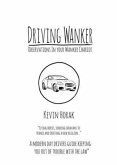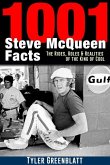In Texas in the early 1900s, a little chalk drawing started to appear on boxcars: a minimalist sketch of a figure with a 10-gallon hat, smoking a pipe, signed "Bozo Texino." This famous railroad tag defied the human lifespan, appearing over 100,000 times over 90 years. Who was Bozo Texino? Artist and filmmaker Bill Daniel set out to solve the mystery of the man behind the pipe and hat. It turned into a 25-year quest, taking Daniel on a tour of railyards and graffiti throughout the US. The result was the documentary Who is Bozo Texino? and the book Mostly True--a chronicle of modern-day hobos, rail workers, and a forgotten outsider subculture. Obscure railroad nostalgia, freight-riding stories, interviews with hobos and boxcar artists, historical oddities, and tons of photos of modern-day boxcar tags are all presented in the guise of a vintage rail fanzine. The book features photos by Tim Gibson, Gene Poon, Toby Hardman, Joan Peacock, Obscura, Coleslaw Kid, Mike Brodie, Austin McManus, Brad Wescott, Jai Janju, Akasha Rebut, Heidi Tullman, Matokie Slaughter, North Bank Fred, Hans Hansen, Smokin Joe, Eden Batki, Daniel Leen, and David Pedroni. Additionally, it features graffiti artists Bozo Texino, Herbert Meyer, Sidetrack, and Smokin Joe and illustrations by J. Alone and Laura Bellmont.
Hinweis: Dieser Artikel kann nur an eine deutsche Lieferadresse ausgeliefert werden.
Hinweis: Dieser Artikel kann nur an eine deutsche Lieferadresse ausgeliefert werden.








